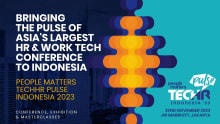Embedding analytics in decision making

One of the analytics verticals that I lead in my current organization is dedicated to Human Resources. Over the years, while I have led this particular area zealously, I have periodically come across two kinds of professionals – the ever ‘skeptic fence sitters’ and ‘eternal nay-sayers’ who have certain reservations regarding analytics. Their most common questions or reasons pertain to:
- The data is not accurate or enough to make any conclusions.
- What about the human emotions? How can you quantify and predict that?
- There is no compelling evidence in accepting this hypothesis; it is counter-intuitive and also defies text book and experience.
- Past patterns may not hold true in future as our context is rapidly changing.
- The line managers will not understand and agree to this.
So, let me try to explain my construed logic of people analytics by the above diagram.
The diagram tries to connect incidents to culture and how analyzing the pattern of the cluster of incidents through workforce analytics can help us make better decisions that may influence culture in a positive manner. Isolated or repeated incidents/events around us drive certain emotions within us. The emotions drive us to take certain actions. Similar actions taken drive behaviors and consistent behaviors ultimately influence long-term culture of any organization. As we collect more and more data around people related incidents and their trigger factors, the purpose of analytics is to uncover the hidden patterns through diagnostics, descriptive, predictive and prescriptive techniques so that we mitigate the risks associated with people decisions.
These principles of HR Analytics are not new. Marketing and Risk Teams have been using similar models to drive consumer buying patterns for quite a number of years now. Various models have been built, tested, accepted and implemented in consumer and risk space across industries. The most common examples cited are of how Amazon and Netflix can predict consumer behavior by analyzing the patterns associated with buying and viewing respectively? So why should HR be any different?
While as an industry we have progressed a lot on HR Analytics maturity curve, I see that a definite leap of faith is required to move from KPI Dashboards/HR Scorecards to act decisively on the predictive and prescriptive models.
These models need to be supported by pragmatic OD interventions to handle the change and ambiguity on people decisions. All this keeping in mind that some organizations still struggle to get their basic headcount numbers right owing to disparate technology systems. But we have to start seeing the woods from the tress before it is too late. To quote a colleague of mine on a lighter note, “HR Analytics has still not reached the stature which astrology commanded in pre-science days. The predictions are still not feared and acted upon but just taken as an alternate way of deduction”.
The future of HR will be moving more and more towards adoption of technology, self-service and machines/algorithms taking decisions based on objective and fast data. Some pundits believe that in the future, an employee may have a more interactive and fulfilling relationship with a server/machine than a HR business partner. Well, if that be the case the way we source, collect, evaluate various employee related data points will undergo a massive transformation. The line between private and public domain will blur further. Strong data privacy laws will be enforced to protect what can or cannot be used in making a people decision. But one for thing is for sure, that the future of HR will be based on how analytics is embedded in each of their decisions. The new world would want everything faster, better and personalized to its needs. Gone will be the days of “spray and pray” HR programs and every service would need to be delivered real time.
I truly believe that this is a once in a lifetime opportunity for HR professionals as they stand on the cusp of something revolutionary that is going to happen soon with this practice. So, sooner you can adopt and adapt to analytics in your DNA, the better change agent you would become for your organization.

















